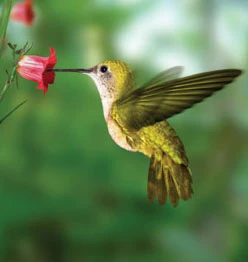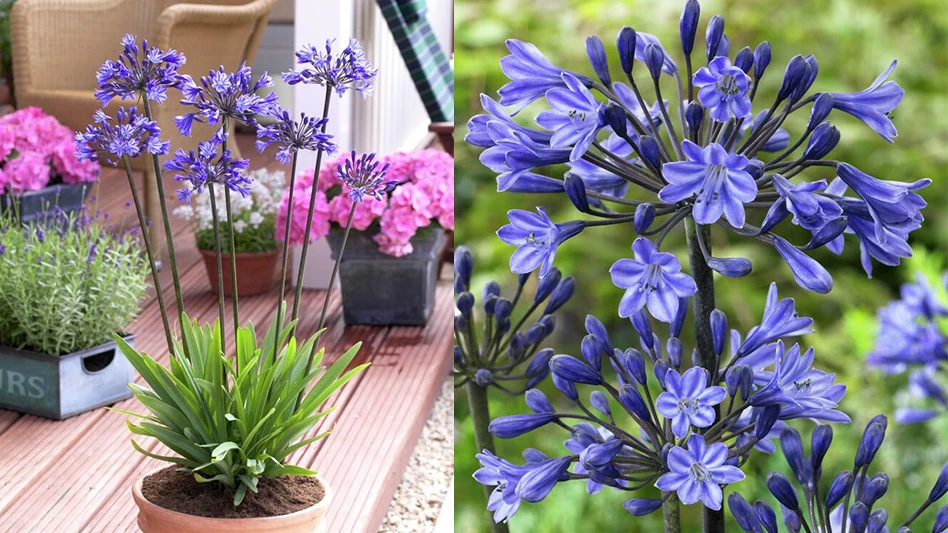
 We start with a riddle: What is green and gold and ready all over? We would give you a moment to mull our quiz were it not for the fact that time spent thinking probably should be replaced by time spent doing. The answer, according to David Mizejewski’s way of thinking/doing, is the National Wildlife Federation’s Certified Wildlife Habitat program.
We start with a riddle: What is green and gold and ready all over? We would give you a moment to mull our quiz were it not for the fact that time spent thinking probably should be replaced by time spent doing. The answer, according to David Mizejewski’s way of thinking/doing, is the National Wildlife Federation’s Certified Wildlife Habitat program.
Mizejewski is the ultra-enthusiastic NWF spokesperson spreading the gospel about a project that dates to 1973 but which only recently has taken widespread root. At its heart the program ties three natural allies. First, there’s the National Wildlife Federation, which touts the value of enhancing landscapes with plants that attract wildlife – to the point that the NWF will declare a yard sporting such plants as officially certified as a natural habitat. In step, the independent garden centers provide an ideal source for the aforementioned plants. Finally, you have the general public, which happens to be at an evolutionary apex with regards to interest in “green” matters.
It’s that latter factor – the “demand” in the supply/demand equation – that stands to yield immediate tangible benefits for the independent garden center operator. But, as Mizejewski noted, this project has offered peripheral bonuses for all parties involved since it was started more than two and a half decades ago to serve two honorable goals.
“The first and most obvious was to help counteract the rampant habitat destruction caused by human development,” he said. “By following the tenets of the program – to provide food, water, cover, and places for wildlife to bear and raise young in our home landscape – regular citizens can make a real difference for local and migratory wildlife. The second reason is less obvious but just as important. Creating such ‘backyard habitats’ gives people a place where they can spend some time outdoors, get fresh air and exercise, watch wildlife, and generally just connect with nature. It’s the perfect antidote to our increasingly indoor, over-scheduled lifestyle, and making the connection on the most local level – your own garden –helps people understand more global conservation issues.”
Receptive audience
That’s not just a commercial for the program; it’s Mizejewski’s mantra, which has been elaborately developed through a series of videos touting the program on the NWF Web site, nwf.org. He earnestly believes in the value of turning the yard into a home for wildlife. Now, he seems to have a receptive audience.
“There’s been a great surge in interest and understanding in ‘going green’ that was kick-started with the film ‘An Inconvenient Truth’ a few years ago,” he said. “Since then, green has been all the rage in everything from cars to fashion to home design. While some folks might move on to the next trend, a level of permanent awareness over how our actions, gardening included, have an impact on our environment is probably higher than it’s ever been. As a result, National Wildlife Federation has seen a steady increase in the number of people creating wildlife-friendly gardens and certifying them with us.”
A great boon to the program’s recent surge is the partnership between NWF and American Beauties, the native-plant specialty line produced by Prides Corner Farms (Lebanon, Conn.) and North Creek Nurseries (Ladenberg, Pa.). When the two growers initiated marketing campaigns to promote the value of the Certified Wildlife Habitat program, customers – first retailers, then consumers – began to fall in step.
“Once Prides and North Creek Nurseries introduced the American Beauties/National Wildlife Federation partnership, we participated by creating a display area in our nursery department dedicated to native plants and using the POP developed for the program,” said Steve Mostardi, owner of Mostardi Nursery in Newton Square, Pa. “We use this natives ‘boutique’ to highlight plants that have special appeal for seasonal interest to generate impulse sales. This has provided opportunities to communicate with customers regarding the benefits of natives through creating habitats and getting certified.”
Habitat builders.
Gateway Garden Center in Hockessin, Del., likewise, has promoted the program vigorously – and seen dramatic results.
“We ask diagnostic questions such as ‘how much sun/shade?,’ ‘is the soil wet, dry or average?,’ ‘do they specifically want to attract butterflies, birds or other wildlife?’” said Nancy Bell, ornamentals manager at Gateway. “The American Beauties program really helps to streamline this part of the process.”
For instance, NWF provides lists of plants suitable for various conditions. In addition, each plant has a tag stating for which type of garden it is suitable. The tag also notes region-specific native plant information and informs consumers that some of the proceeds benefit the NWF.
“We have chosen to provide Habitat Certification information and applications in our American Beauties section and have the garden center’s certification prominently displayed as you enter,” Bell said.
To enhance promotional efforts, Gateway includes Delaware-specific plant options that can help customers further attract native wildlife. The sum of these parts, Bell said, has become something of a phenomenon.
“In the three years that I have been at Gateway, the American Beauties program has at least doubled its sales each year,” she said. “We have customers who come in and go straight to this section; they come back and bring a friend.”

Explore the September 2009 Issue
Check out more from this issue and find your next story to read.
Latest from Garden Center
- Meet the All-America Selections AAS winners for 2025
- AmericanHort accepting applications for HortScholars program at Cultivate'25
- 2025 Farwest Show booth applications now open
- The Garden Center Group hosting 'The Financial Basics of Garden Retailing Workshop Series'
- Weekend Reading 11/22/24
- Hurricane Helene: Florida agricultural production losses top $40M, UF economists estimate
- Terra Nova Nurseries shares companion plants for popular 2025 Colors of the Year
- Applications open for Horticultural Research Institute Leadership Academy Class of 2026





